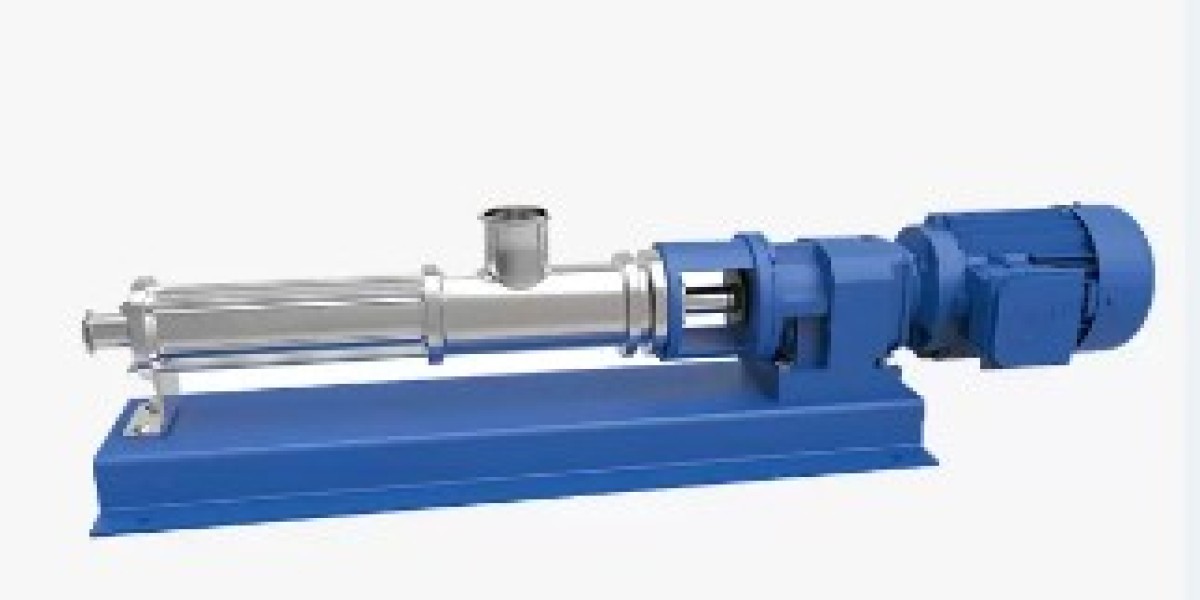Pumps are essential machines used to move liquids and gases from one location to another. Within the field of pumps, there are different categories and types designed for unique applications and flow requirements. Two common pump types are centrifugal pumps and progressive cavity pumps. While both move fluids, they differ in their internal design and operating principles.

This article explores the key differences between centrifugal pumps and progressive cavity pumps. We'll discuss their internal components, how they work, applications where each type excels, advantages and disadvantages of each, as well as other important factors to consider when selecting the right pump for a given task. Read on to learn more about these two pump categories and better understand where each type fits best.
Internal Components
Let's start with examining the internal components that set these two pump types apart. As the names imply, centrifugal pumps utilize centrifugal force principles, while progressive cavity pumps employ a progressive cavity effect.
Centrifugal Pump Components:
- Impeller: The rotating component that looks like a fan or propeller blade. It imparts velocity to the fluid.
- Casing: The stationary housing that contains and directs the fluid discharged from the impeller.
- Shaft: Connects the power source (motor) to the impeller for rotation.
Progressive Cavity Pump Components:
- Rotor: Eccentrically mounted inner shaft that forms lobed cavities with the stator.
- Stator: The stationary outer casing that complements the lobed rotor shape.
- Lobes: Helical ribs on the rotor and stator that mesh together to create cavities.
As you can see, the internal shapes and components are very different between these two pump categories. This leads to their unique fluid handling characteristics.
How They Work
Centrifugal Pumps
Centrifugal pumps use centrifugal force to propel liquids and gases outward from the center of rotation. As the impeller rotates, it picks up the fluid at the center inlet and slings it outward via centrifugal force, increasing velocity and pressure in the process. The fluid exits axially from the pump discharge.
No suction lifting capability exists since they rely on centrifugal force. They work best with flooded suction where the fluid level is above the pump inlet. Best suited for clean, low-viscosity fluids with lifting or boosting applications.
Progressive Cavity Pumps
Progressive cavity pumps work on a completely different principle than centrifugal pumps. The progressing cavities are formed by the meshing of the rotor lobes inside the stator.
As the rotor turns, the cavities progress from the pump inlet to outlet, trapping fluid in between. This "squeeze and transport" action progressively moves the fluid through, making it a positive displacement pump. Self-priming and capable of handling mixed liquids/solids or highly viscous fluids. Suction lift ability means they can pump from below the pump.
Applications
Now that we understand the internal differences and operating principles, let's explore where each type is commonly applied:
Centrifugal Pumps:
- Transfers of clean water and wastewater
- Petroleum, chemical and food processing transfers
- Cooling water and boiler feed applications
- Swimming pool filtering
- Marine applications
- Fire suppression systems
- Transferring gasoline and fuel oil
Progressive Cavity Pumps:
- Transfer of viscous fluids like slurries, polymers, and adhesives
- Sewage and sludge handling
- Mining and mineral/ore processing
- Oilfield pumping of drilling fluids/muds
- Shipboard bilge removal
- Food applications like tomato paste transfer
- Metering pumps for precise dosing
As you can see, centrifugal pumps excel with cleaner, less viscous fluids where flow rates are important. Progressive cavity pumps handle mixed/solids-laden or highly viscous fluids better thanks to their positive displacement operation.
Operation Parameters
There are also differences in how centrifugal vs progressive cavity pumps operate in terms of:
Flow Rate - Centrifugal pumps can move much higher flow rates thanks to imparting velocity via centrifugal force. Progressive cavity pumps have lower flow rates due to their displacement mechanism.
Pressure Generation - Centrifugal pumps produce moderate pressures up to 100+ psi typically. Progressive cavity pumps produce higher pressure capabilities up to 1000+ psi.
Viscosity Range - Centrifugal pumps handle lower to moderate viscosities up to about 200 SSU best. Progressive cavity pumps excel with higher viscosity fluids from water-like up to about 1,000,000 SSU.
Self-Priming - Only progressive cavity pumps are true self-priming models that can re-prime if run dry, as they can displace air. Centrifugal pumps are not generally considered self-priming.
Solids Tolerance - Progressive cavity pumps can easily handle fluids with up to 50% solids by volume, while centrifugal pumps typically allow only 5-10% solids.
These operational parameters outline further why progressive cavity pumps are preferred for viscous or abrasive applications requiring positive displacement, self-priming ability and higher pressure capacity, while centrifugal models have advantages of flow rate and clean fluid applications.
Advantages and Disadvantages
Let's wrap up with a quick overview of advantages and disadvantages associated with each type:
Centrifugal Pump Advantages:
- Higher flow rates
- Lower initial cost
- Simple mechanical design
- Easy maintenance
- Efficient and energy saving
- Wide variety of models available
Centrifugal Pump Disadvantages:
- Not self-priming
- Limited to low viscosity fluids
- Produces lower discharge pressures
- Cavitation occurs more easily
- Requires flooded suction condition
- More affected by entrained gases
Progressive Cavity Pump Advantages:
- Self-priming capability
- Excellent with mixed/abrasive fluids
- Handles very high viscosities
- Generates high discharge pressures
- Virtually maintenance-free
- Accurate metering ability
Progressive Cavity Pump Disadvantages:
- Higher initial cost
- Complex mechanical design
- Lower flow rates
- Requires accurate speed control
- Sensitive to foreign solids entrance
- Lower efficiency than centrifugals
In summary, both centrifugal and progressive cavity pumps effectively move liquids, but operate on completely different principles internally. Centrifugal pumps use centrifugal forces imparted by an impeller, while progressive cavity pumps rely on rotor/stator cavity displacement.
Key factors like fluid type, flow rates required, suction conditions, pressure needs and solids tolerance should be evaluated to determine whether centrifugal or progressive cavity style is the best fit for your specific application. Understanding the internal designs and capabilities of each type will aid in the selection of the appropriate pump.
We hope this article helped explain the core differences between centrifugal and progressive cavity pumps. Please let me know if you need any clarification or have additional questions! Properly selecting the right pump design is crucial for optimizing system performance.









